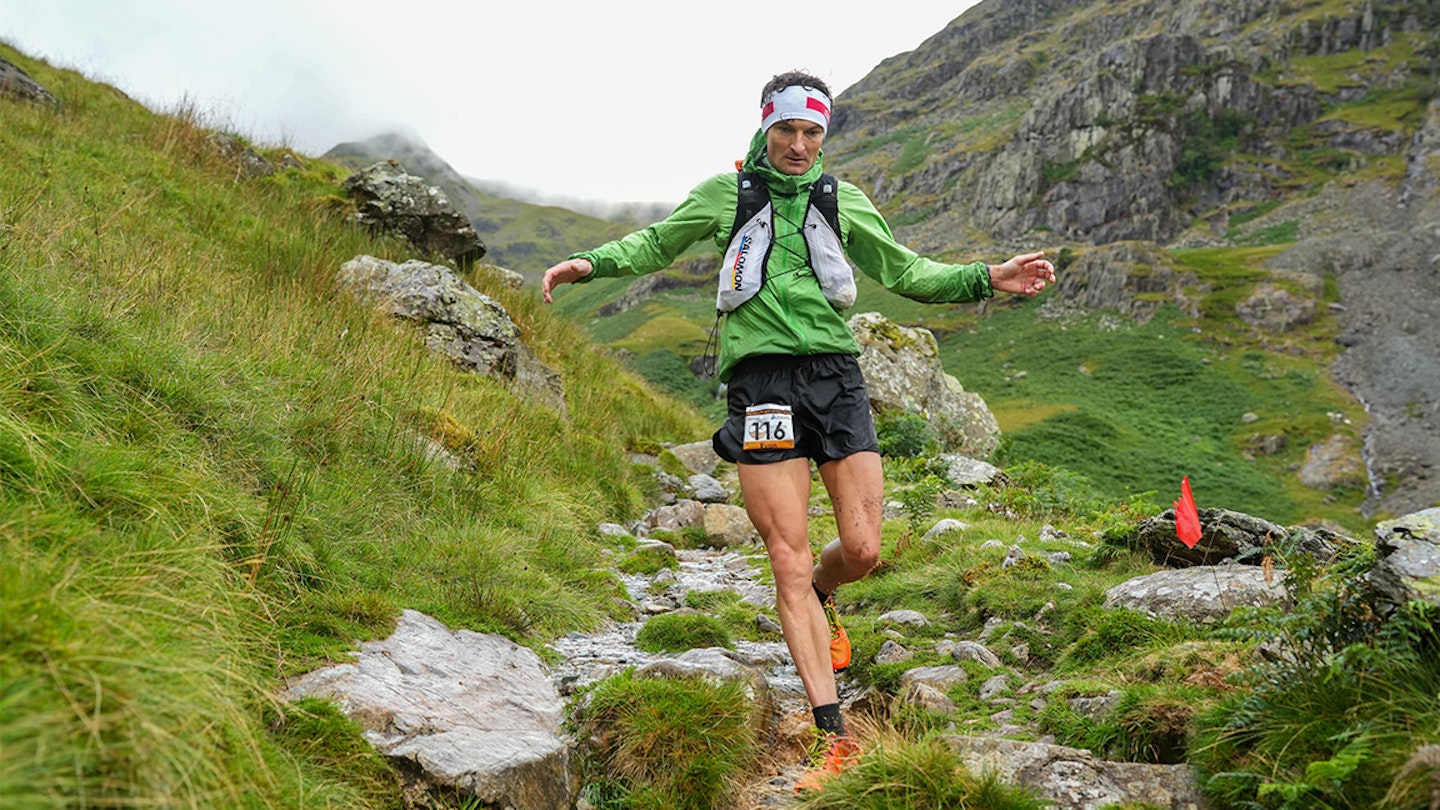Since its official debut in the 1990s, the popularity of running above the clouds, balancing on precarious ridges, and plummeting down dizzying descents has made skyrunning a fantastic way to elevate your trail running.
Sure, you may often be too busy catching your breath to really absorb the stunning views, but what makes skyrunning special is, in equal parts, the effort and the reward. Here’s a quick overview of what this sport is all about and how you can experience it from expert Alecsa Stewart.
What is skyrunning?

While running on the trails basically covers all off-road runs, from gravel and wide forest tracks to winding singletracks, skyrunning is more specific and technical. Combine the wild feeling of fell running with scrambling up and down steep terrain and going high up, “where earth meets sky” as the International Skyrunning Federation defines it, and you’ll have an adventure on your hands.
The ISF was formed in 2008 in an attempt to govern the sport and regulate the world and national series of races that we have today. To qualify as a skyrunning race, most events need to meet the criteria: “running in the mountains above 2,000m altitude where the climbing difficulty does not exceed II grade and the incline is over 30%.”

If this sounds challenging… it is! Skyrunning races have a mix of technical, scrambling sections interweaved with more runnable parts. The climbing inclines will have your calf muscles screaming. The daring descents take their tolls on your quads. And there is at least some relatively exposed, but technically manageable, climbing. As for the altitude, it’s the only element UK races don’t and can't tick off, whilst most European ones will be “above the clouds.”
Charles Sproson, Head of Skyrunning UK & Ireland (a member of ISF and the organisation hosting the Skyrunner ® National Series), is noticing that skyrunning is seeing a boom after lots of people took up running during the pandemic. For those who started out running on the road, it’s an opportunity to leave the city behind, clear their mind, and test themselves in a completely different environment.
And there’s never been a better time to get into the sport, as race directors are creating more accessible races, resulting in a “feeder system” for newcomers to get to know the essentials before committing to longer events (typically around and above the marathon distance, e.g. the Rab Helvellyn Sky Ultra is 57 km long, with 3700 m of ascent).
A brief history of skyrunning
So, who came up with the idea of running and organising competitive events in settings that most people would consider the realm of alpinism and rock climbing? It all started in the early 1990s, with the Italian mountaineer Marino Giacometti being credited for coining the phrase and launching the tagline “Less Cloud. More Sky” for the ISF. From the Italian Dolomites and French Alps, races then started popping up around the world.
The “spirit of skyrunning” refers to a period in the 1990s when runners aimed to move fast on technical, high mountains, looking to set speed ascent records (orFKTs) with minimal equipment. Often, they would borrow techniques from other disciplines, including rock climbing, mountaineering, and ski touring.

More recently, perhaps the purest example of skyrunning is the Trofeo Kima race. A small event, restricted to just 350 runners and organised once every two years, it has everything you could dream of from mountain running, climbing to over 3,000m altitude and crossing snow fields, moraine and exposed ridges.
The total distance run is 52km with a massive 4,200m of climbing and runners are expected to navigate via ferrata and challenging rocky crossings, while managing the impact of running at high altitude. Currently, the course record belongs to none other than trail legend Kilian Jornet on the men’s side (just under 6 hours 10 minutes) and to Hillary Gerardi on the women’s (7h 30min 38sec).
Who is The Elite Trail Team?
The Elite Trail Team aims to enhance elite runners' performance with a holistic approach that brings together world-recognised experts, learning from other high performance sports and environments, and underpinned by a focus on athlete health and wellbeing. Its vision is to bring world-class support to trail running, while helping progress the sport. Check out The Elite Trail Team on Instagram.
